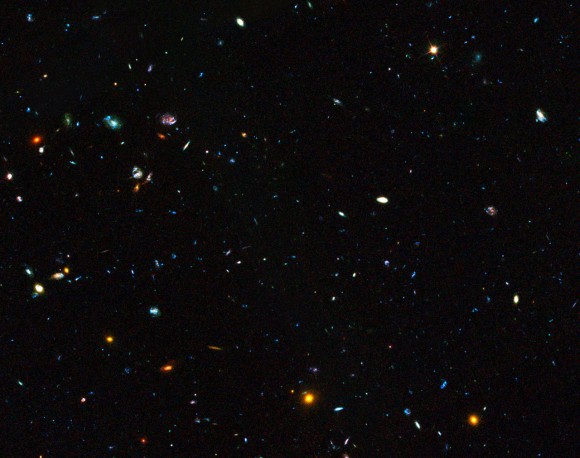| Online: | |
| Visits: | |
| Stories: |

| Story Views | |
| Now: | |
| Last Hour: | |
| Last 24 Hours: | |
| Total: | |
Powerful Starbursts in Dwarf Galaxies Helped Shape the Early Universe, a New Study Suggests

GOODS field containing distant dwarf galaxies forming stars at an incredible rate. Image Credit: NASA/ESA Hubble Space Telescope
Massive galaxies in the early Universe formed stars at a much faster clip than they do today — creating the equivalent of a thousand new suns per year. This rate reached its peak 3 billion years after the Big Bang, and by 6 billion years, galaxies had created most of their stars.
New observations from the Hubble Space Telescope show that even dwarf galaxies — the small, low mass clusters of several billion stars — produced stars at a rapid rate, playing a bigger role than expected in the early history of the Universe.(…)
Read the rest of Powerful Starbursts in Dwarf Galaxies Helped Shape the Early Universe, a New Study Suggests (526 words)
© Shannon Hall for Universe Today, 2014. |
Permalink |
No comment |
Post tags: Hubble Space Telescope, star formation
Feed enhanced by Better Feed from Ozh
Source: http://www.universetoday.com/112672/powerful-starbursts-in-dwarf-galaxies-helped-shape-the-early-universe-a-new-study-suggests/



